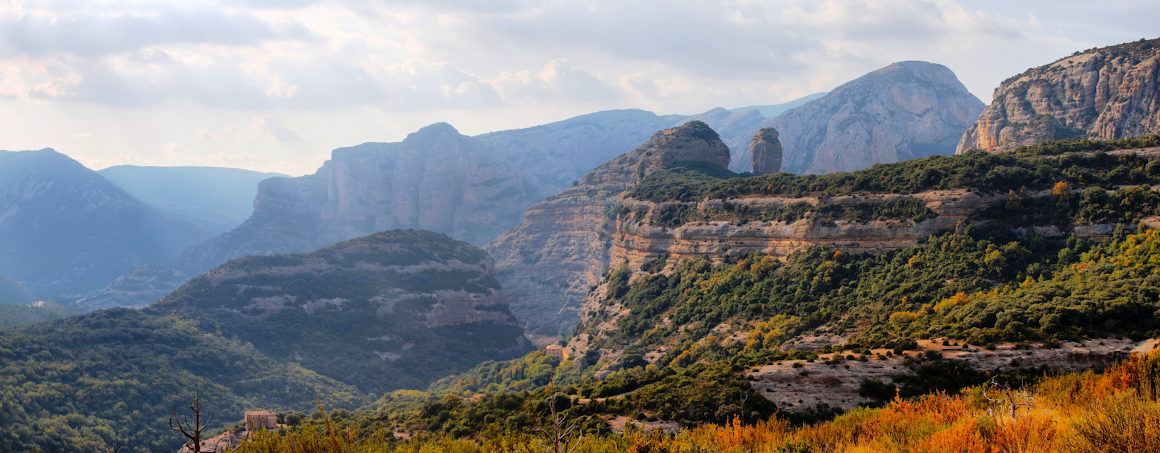
One of Hoya de Huesca’s biggest natural drawcards is its wetlands and reservoirs, a series of exceptional habitats for the preservation of biodiversity. Featured among these is Alboré, a lake that is now part of La Sotonera reservoir.
Its location at the foot of the Pyrenees gives it huge strategic value, particularly for the fascinating and enigmatic phenomenon of bird migration. The shallow waters of the lake and thickets of tamarisk along its shores seem to abound with life, and in winter are just teeming with ducks and other waterfowl that set up their temporary home here.
But birdwatchers are in for a treat when the so-called pre-nuptial migration at the end of winter congregates the thousands of cranes that use La Sotonera and Alboré as a rest stop before crossing the Pyrenees to their destinations in Northern Europe.
Silhouettes in stone have been carved by unseen water and silent wind in an ancient and evocative landscape. Platforms, gullies and craggy stone outcrops daringly compete with the twilight.
Their eroded forms change with the perspective. Peña Mediodía is a geological fantasy with a life of its own, like many of the rock formations in the southern hills of Hoya de Huesca.
Peña Mediodía is an important sandstone outcrop measuring 80 metres in length and standing 25 metres tall. Given that it stands prominently over the village of Piracés, dominating a wide stretch of country, its strategic location was used by the Moors to erect a fortress in the area during the 9th and 10th centuries. It is worthwhile climbing to the top to observe their imprint and, naturally, to enjoy the incredible panorama.